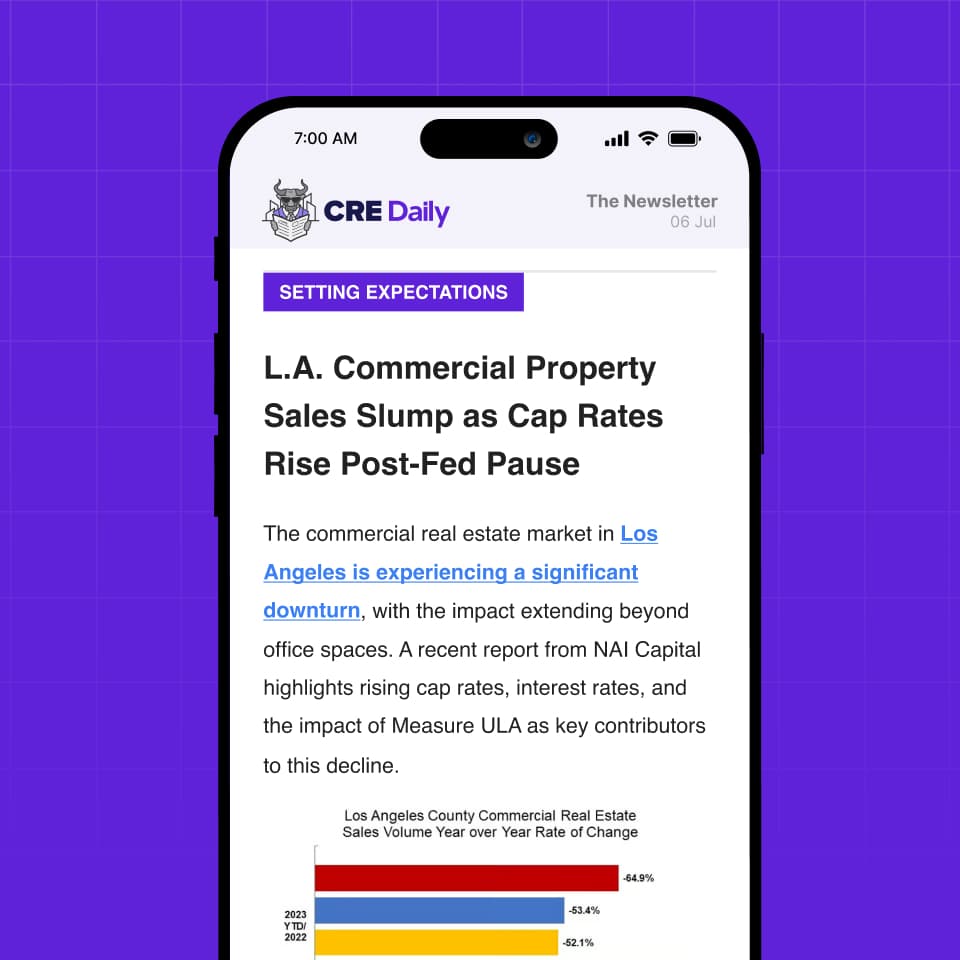- Cold storage vacancies hit a 20-year high, with Newmark forecasting the supply-demand gap to peak in 2025 before a gradual recovery begins.
- A record development pipeline, coupled with weak food inventories, elevated rents, and inflation, has disrupted market fundamentals.
- Older facilities are most impacted, as new, modern builds dominate the pipeline and users shift away from outdated infrastructure.
- Despite current headwinds, long-term fundamentals remain strong, driven by e-grocery growth, M&A activity, and evolving food logistics strategies.
A Peak Year For Imbalance
The US cold storage sector is in unfamiliar territory, reports GlobeSt. According to Newmark’s H1 2025 US Cold Storage Market Overview, vacancy rates have reached their highest level in over 20 years, with a peak imbalance between supply and demand expected later this year. While a slight correction is forecasted by 2026, the broader outlook still points to continued oversupply.
The surge in vacancy comes on the heels of a historic development boom. Currently, 7.4M SF of new cold storage is under construction. This development surge stands in sharp contrast to weakening market fundamentals. Rising costs, lower food inventory levels, and shifting consumer habits are putting additional pressure on the sector.
Why It’s Happening
Multiple headwinds are converging. A wave of speculative development is bringing new facilities online just as grocery inflation and economic uncertainty weigh on demand. Older facilities—many averaging over four decades in age—are struggling to compete, as users pivot to build or lease modern space.
Food safety regulations and a wave of mergers and acquisitions are further reshaping the landscape. Companies are either consolidating space or investing in purpose-built assets to meet evolving standards.
Get Smarter about what matters in CRE
Stay ahead of trends in commercial real estate with CRE Daily – the free newsletter delivering everything you need to start your day in just 5-minutes
The E-Commerce Effect
Cold storage may account for less than 2% of the US industrial market, but it punches above its weight when it comes to consumer impact. E-grocery sales rose 28% year-over-year in Q2 2025, according to Brick Meets Click and Mercatus. While ship-to-home remains dominant, a growing number of consumers are using multiple channels to fulfill grocery needs, putting pressure on logistics networks.
Retailers are responding by leaning on third-party logistics firms and strategically placed urban fulfillment centers, aiming to keep pace with demand while controlling real estate costs.
Looking Ahead
While the current oversupply is causing near-term disruption, Newmark sees signs of long-term health. Between 2021 and 2023, cold storage company formation surged at more than double pre-pandemic levels, and rental rates have more than doubled since 2020.
Still, a cooling of new project starts and a potential contraction in the number of firms in 2025 suggest the market is entering a period of correction. As inventory rebuilding resumes and demand realigns, fundamentals are expected to stabilize.
Bottom Line
The cold storage sector is undergoing a necessary reset after years of rapid expansion. In the short term, vacancy and oversupply continue to pose significant challenges. Over the long run, however, demand drivers such as e-grocery growth and stricter food safety regulations are expected to help restore balance to the market.

















